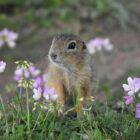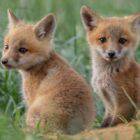Why do Prairie dogs kiss each other?

One behavior that has piqued my interest is the seemingly affectionate act of prairie dogs engaging in what appears to be kissing. But before delving into the intricacies of prairie dog kissing, it is essential to understand the complex social structures that define their colonies.
Prairie dogs are highly social creatures that live in tight-knit communities, often referred to as towns. These towns consist of interconnected burrow systems, where individual prairie dogs live in family groups known as coteries. Within these coteries, communication is paramount for survival, and prairie dogs have evolved a sophisticated set of behaviors to maintain social cohesion.
Decoding the Prairie Dog Kiss
While the visual spectacle of two prairie dogs coming nose-to-nose may appear as an adorable and affectionate gesture, the deeper significance lies in understanding the intricate nature of their communication. Prairie dogs, being highly social creatures, have developed a nuanced system of conveying information, and the “kiss” plays a pivotal role in this complex language.
The nose-to-nose contact observed among prairie dogs is, in fact, a form of greeting and social interaction. This behavior is not confined to specific circumstances but is rather a routine occurrence within prairie dog colonies.
The Kissing Conversation
Beyond the visible spectacle lies a realm of olfactory communication. Prairie dogs possess specialized scent glands near their mouths, and when two individuals “kiss”, engaging in the nose-to-nose contact, they are effectively exchanging chemical signals. These signals contain a wealth of information, creating a comprehensive dialogue that goes beyond the limitations of vocalizations and visual cues.
The secret to this olfactory conversation lies in the unique scent profile of each prairie dog. These scent signals communicate a variety of details about the individual, including its identity, age, sex, and even its social status within the colony. Imagine walking into a room and instantly knowing not just the names of those present, but also their life stories and social standing. This is the level of detailed information exchanged through the seemingly simple act of touching noses.
Furthermore, this chemical dialogue extends beyond the individual identities, reaching into the environmental context. Prairie dogs are known to mark their territories with specific scents, and by engaging in nose-to-nose contact, they share information about the conditions and resources in the surrounding areas. This collective awareness aids in the communal decision-making processes vital for the survival of the entire colony.
Strengthening Social Bonds
At its core, the “kiss” among prairie dogs is a social glue, weaving threads of trust, cooperation, and mutual understanding. The bonds forged through this tactile exchange are more than mere gestures; they are the foundation upon which the survival and prosperity of the entire coterie rest.
When two prairie dogs engage in this nose-to-nose contact, it is not a random encounter but a dance of recognition. In the world beneath the prairie, where darkness and narrow tunnels reign, visual cues are limited.
The act of kissing serves as a tangible acknowledgment of each individual’s presence and identity within the community. This recognition is fundamental for a harmonious existence, enabling prairie dogs to distinguish familiar faces from potential intruders and strengthening the communal ties that underpin their social structure.
The Evolutionary Roots of Prairie Dog Affection
While it might be tempting to anthropomorphize this kissing behaviors, attributing emotions such as affection or love to prairie dogs, it’s essential to view their actions through the lens of evolutionary pragmatism.
Beyond the surface-level visual recognition, the act of kissing facilitates the exchange of crucial information. Prairie dogs possess scent glands near their mouths that release unique chemical signatures. As they touch noses, they share these scents, creating a communal olfactory tapestry that conveys details about their identity, health, and recent experiences. This chemical conversation is an invaluable resource, allowing the community to stay informed about the well-being of its members and the conditions of the surrounding environment.
Within the tightly-knit coteries, prairie dogs have developed an array of behaviors to cement their social fabric, and the seemingly affectionate act of “kissing” plays a pivotal role.
Prairie dogs face a myriad of threats in their grassland habitat, ranging from predators like coyotes and birds of prey to environmental challenges such as drought or food scarcity. The bonds strengthened through kissing play a crucial role in building a unified front against these adversities.
A coterie that is well-connected and cooperative is more resilient, capable of responding collectively to external pressures. In this sense, the seemingly simple act of kissing is a strategic move in the evolutionary chess game, enhancing the chances of survival for both individuals and the group as a whole.










